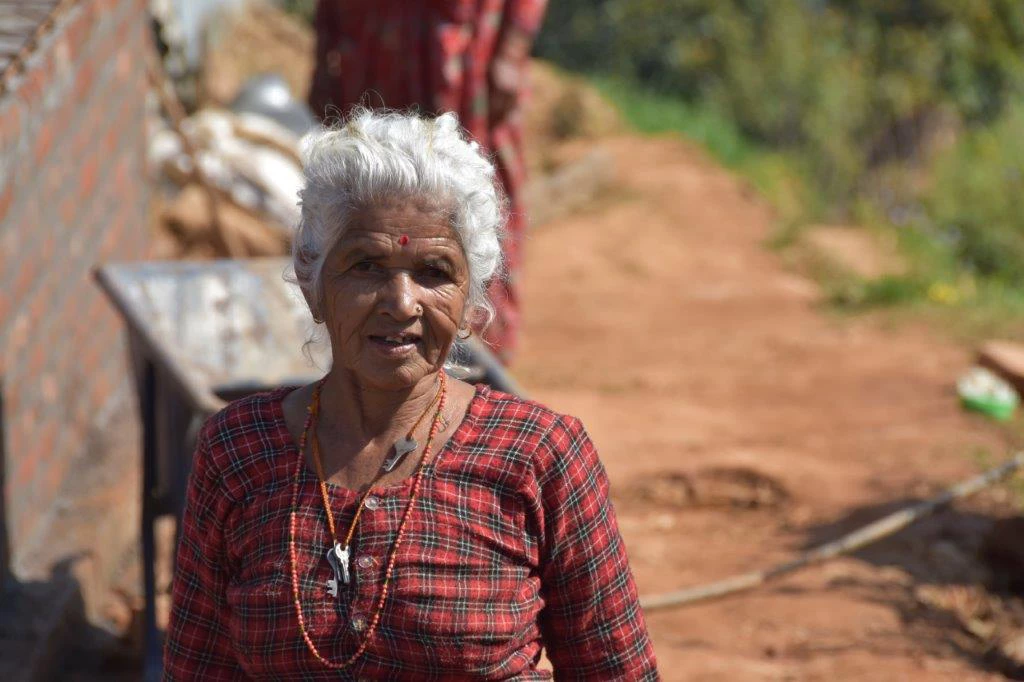
Over the last few decades, Nepal has considerably improved the health and wellbeing of its people.
As we mark World Health Day today, here’s an overview of how much health progress Nepal has made in its efforts to meet the Sustainable Development Goals (SDGs), especially the SDG 3 indicators, which focus on healthy lives and wellbeing for all at all ages.
For optimal user experience, check this link on Chrome or Firefox.
Indicator 3.1.1: Maternal mortality ratio
The goal is to reduce maternal mortality to fewer than 70 per 100,000 live births by 2030. In the chart below, you'll see that the maternal mortality ratio in 1990 was 901 per 100,000 live births.
Since then Nepal has made significant progress, especially compared to other low-income countries.
Indicator 3.1.2: Proportion of births attended by skilled health personnel
In 2016, just over half (58%) of births in Nepal were attended by skilled health personnel according to the Annual report of the Department of Health Services at the Ministry of Health. Over the last 16 years, Nepal has made strides in increasing the number of births attended by skilled health personnel.
While there is no specific goal by the UN regarding this indicator, it seems Nepal is on the right trajectory to increase the proportion of births attended by skilled health personnel in the coming years.
Indicator 3.2.1: Mortality rate, under five years of age
By 2030, the goal is to bring under 5 mortality to at least 25 deaths per 1,000 live births. Nepal has been making steady progress.
In 1977, just over four decades ago, 226 newborns out of every 1,000 babies died before reaching the age five in Nepal. In 2017, that rate dropped to 33. That’s remarkable.
Indicator 3.2.1: Mortality rate, under 5 years of age in Provinces of Nepal
Mortality rate under five is the highest in Sudurpaschim Province, according to the Nepal Demographic and Health Survey 2016, and the rate is the lowest in the Gandaki Province.
Indicator 3.4.1: Cause of death, by non-communicable diseases
By 2030, the goal is to reduce premature mortality from non-communicable diseases (NCDs) by one-third in all countries. If you look at the chart below, you will see there has been a steady increase in deaths caused by NCDs in Nepal. The share of deaths going towards NCDs is a little bit tricky to evaluate as, if more people are living into adulthood, they are more likely to develop NCDs.
Tobacco use, high alcohol consumption, low fruit and vegetable consumption, physical inactivity, obesity and overweight, and air pollution are the major risk factors for NCDs in Nepal, according to the Ministry of Health and Population.
For a global perspective on the cause of death, by non-communicable diseases in other countries, also check out the map below.
Indicator 3.b.1: Vaccination coverage of children age 12-23 months
The goal is to reach at least 80 percent vaccination overage as per the World Health Organization recommendation.
The graph below shows vaccination coverage among children age 12-23 months for all basic vaccines in Nepal where at least 4 provinces have 80% coverage. The vaccination coverage is the lowest in Province 2 (65%) and highest in Province 4 (93%).
The percentage of children age 12-23 months who received all basic vaccinations increases with increasing mother’s educational attainment, according to Nepal Demographic and Health Survey (PDF) 2016. Vaccination coverage is lowest among children whose mothers have no education (68%) and highest among those whose mothers have an SLC or higher (91%).
Indicator 3.9.1: Change in life expectancy in 2016 due to air pollution in Nepal
By 2030, the goal is to reduce substantially the number of deaths and illnesses from air pollution.
The map below shows the change in life expectancy in 2016 in districts of Nepal, based on the data published by Air Quality Life Index (AQLI), Energy Policy Institute, University of Chicago. [Note: The data and boundaries below are based on the districts of pre-federal Nepal.]
Not only the Terai districts in southern Nepal but also districts like Kathmandu, Kaski, Lalitpur, and Bhaktapur are affected significantly by air pollution. The mountainous and some hilly districts see relatively less impact in life expectancy due to air pollution.
Target 3.8: Universal Health Coverage
The SDG goals aim to achieve universal health coverage including financial risk protection, access to quality essential health-care services and access to safe, effective, quality and affordable essential medicines and vaccines for all.
The goal is measured in two parts:
- The average coverage of essential services based on a set of tracer indicators including reproductive, maternal, newborn, and child health, infectious diseases, noncommunicable diseases and capacity of the health system to deliver those services; and
- How much the households have to spend directly out of their pocket as a share of their expenditure or income in accessing health services.
Nepal (represented by the big dot) has an average service coverage of 46, which is lower than other countries in the region (shown by the other solid dots). Factors in the low average service coverage include that only 50% of children suspected of having pneumonia are brought in for medical treatment; 46% of household have at least basic sanitation; only 70% of the adult population is estimated to have blood pressure at normal rates; and Nepal has less than 1 surgeon for each 100,000 population.
Nepal (represented by the big dot) has a larger percentage of its population spending a larger share of household budget on health care. Based on the 2010 household survey, 3.3% of the population spend more than 25% of its household budget on health expenses.
This is largest in the region after Bangladesh and India. According to the same survey, more than 27.4% of the population spends more than 10% of its household budget on health expenses. This is larger than any other country in the region and in fact one of the highest in the world where this measurement is available.
This blog post is part of a series for the ‘Partnership for Knowledge-based Poverty Reduction and Shared Prosperity’, a World Bank project with support from DFID to increase production and usage of data and statistics in Nepal. Kari Hurt and Suraj Regmi also contributed to this blog.


Join the Conversation